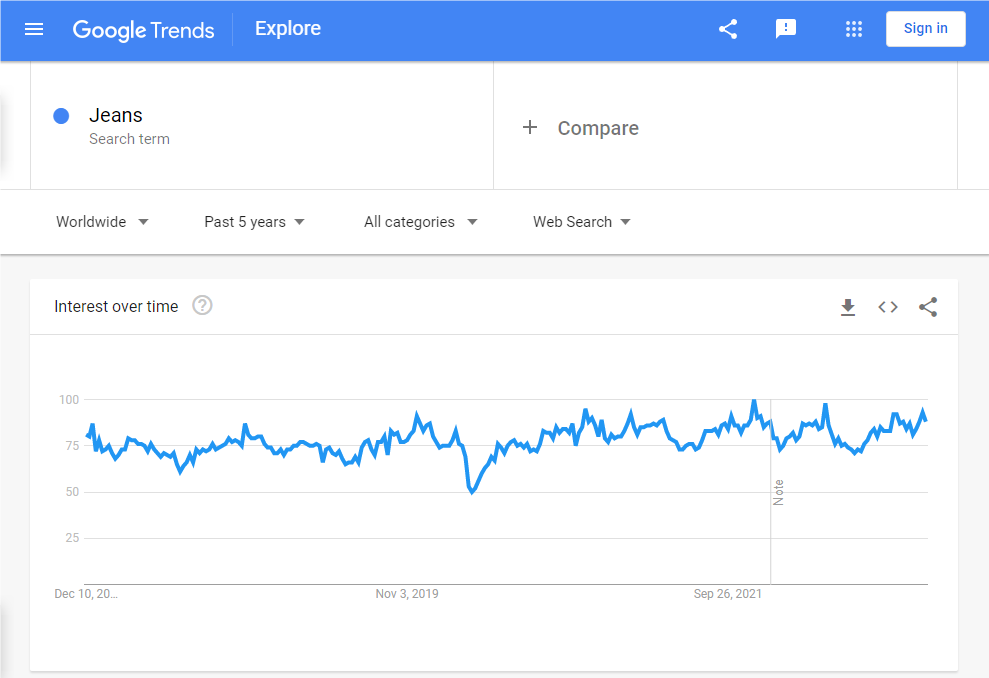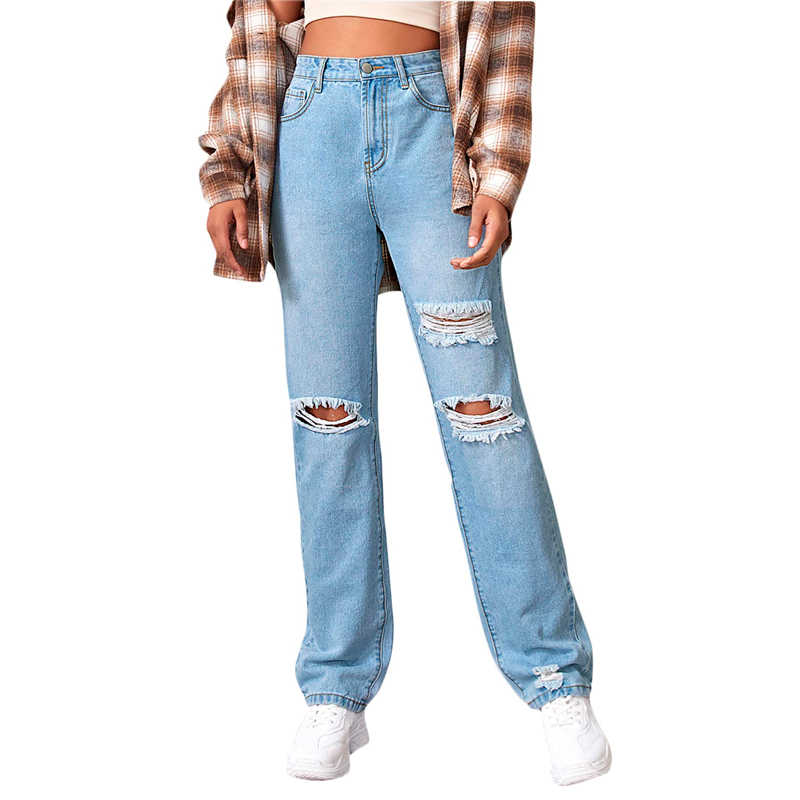How are jeans born?
Jeans are pants made from denim or dungaree cloth. They were invented by Jacob W. Davis and Levi Strauss in 1873 and a worn still but in a different context. Jeans are named after the city of Genoa in Italy, a place where cotton corduroy, called either jean or jeane, was manufactured.
One day, his customer ordered a pair of sturdy pants that could withstand hard work. He made them from denim that he bought from Levi Strauss & Co and made them stronger by placing copper rivets at the places pants rip the most: pockets and flies. When he wanted to patent them, he wrote to Levi Strauss, and they became partners. They opened a bigger factory, and that is how jeans were born.
Jeans’ features, structures & market trends
In the denim market, although cotton is undoubtedly the most important, there are also a series of blended fabrics, such as cotton/polyester (50/50) blended fabrics, as well as cotton and other fibers such as Tencel, linen, and even jute, Wool yarns are woven together.
These denim products are different from many products in the denim market, which gives consumers a high level of product design and high value-added clothing. The use of mercerized stretch denim and ring-spun yarns can also increase the value of products. Some companies have invested in these areas. The ring-spun yarn has higher strength, soft feel, and the appearance of a thick yarn on the surface of cotton denim.

Jeans transcend gender, age, and class – with most people owning more pairs than there are days in the week. Their appeal will always be timeless but the design and the fabric technology involved will forever evolve with the times. Denim is mainly made of cotton, and it has also developed a variety of raw material structures, including natural fiber blends of cotton, wool, silk, and linen, and blends with chemical fibers, as well as stretch yarns, tight-twisted yarns, and fancy yarns as raw materials. The higher the content of spandex yarn, the greater the elasticity. Yarn counts are available in 7*7, 7*6, 7*8, 10*7, and other specifications. The organization structure is generally twill (2/1, 3/1, 1/3), broken twill, and radial tightness is greater than Latitude.
The color of denim has developed from vulcanized and indigo to light blue, black, white, and color. There are many processes for finishing denim, which is an important part of the development of denim series. The main ones are enzymes, stone milling, sandblasting, cat whiskers, silicone oil, bleaching, coloring, and snowflake washing.
Jeans have been a popular product since their introduction. According to Google Trends, jeans have gotten a lot of attention around the world in the last five years. This means that there is a greater demand for jeans on the global market.

Select the best custom jeans for you
Though now there’s a range of innovative materials available, denim remains one of the most versatile, durable, and highly sought-after fabrics on the market. Since the clothing customization trends, pure cotton, polyester, spandex, diving clothing, etc become the most often-use fabric for print on demand, especially for all over printing. After importing printers for sublimation, heat transfer and DTG manufacturing, recently we build up a new Custom Jeans series for customization with your branding designs!

The 5 most popular custom jeans styles

1. Wide leg jeans
Wide-leg jeans are characterized by their loose fit, and some break dancers prefer to perform in them because they provide more space and style than other pants.

2. Oversized jeans
These pants are appropriate for obese people. Obese people who dislike sports are common in today’s society. There are few pants on the market that fit an obese person. This is why oversized jeans are so popular.

3. Traight-leg jeans
Straight-leg jeans are a less skin-tight, more relaxed version of skinny jeans. Straight-leg jeans are similar to wide-leg pants in appearance. Both are more spacious than skinny jeans. If you don’t think skinny jeans are for you, try straight jeans.

4. High-rise jeans
High-rise jeans, as the name implies, are distinguished by their ability to reach the area above the waist when worn. A high rise is typically defined as 10 inches above the waist, whereas a normal height is 9-11 inches. This is very flattering, elongating your legs and improving the proportions of your body.

5. Flare jeans
Flared jeans were popular in the 1970s and 1990s, and in recent years they’ve become extremely fashionable with a more subtle modern flare or a kick-flare/cut style. Flared pants look great with heels and can help to lengthen your legs and shape your butt!


Do you offer Print on Demand jeans?
Hello,
We currently do not offer print on demand jeans, you can check out our app, we have a wide range of product categories for you to choose from.